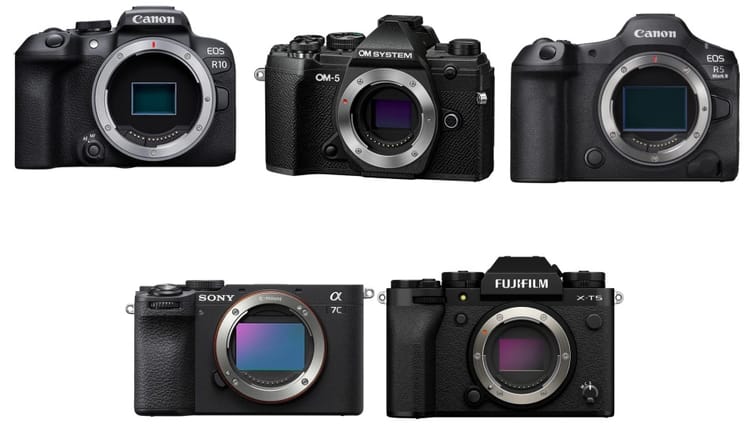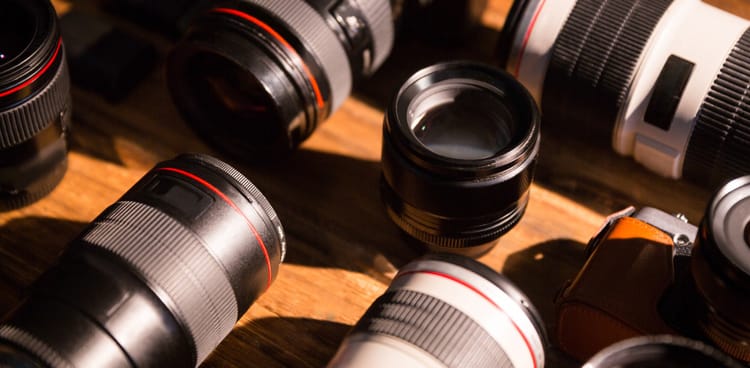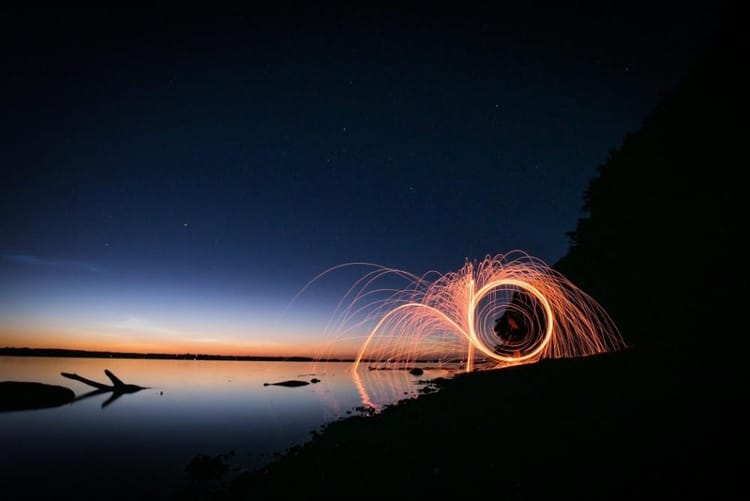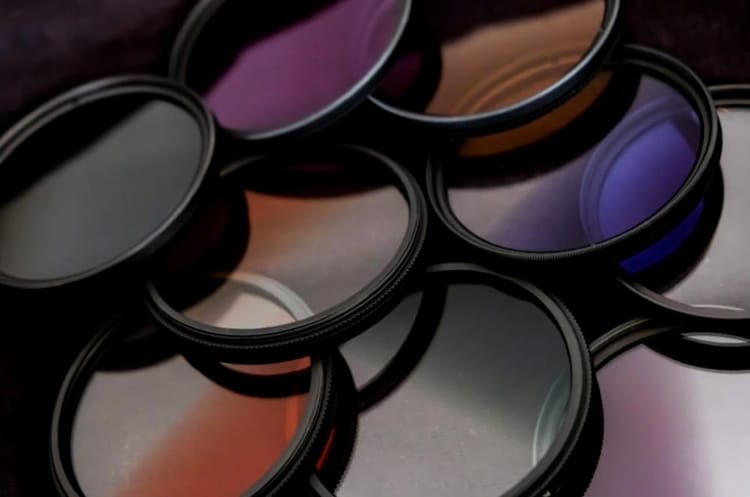Essential Camera Gear for Stunning Wildlife Photography
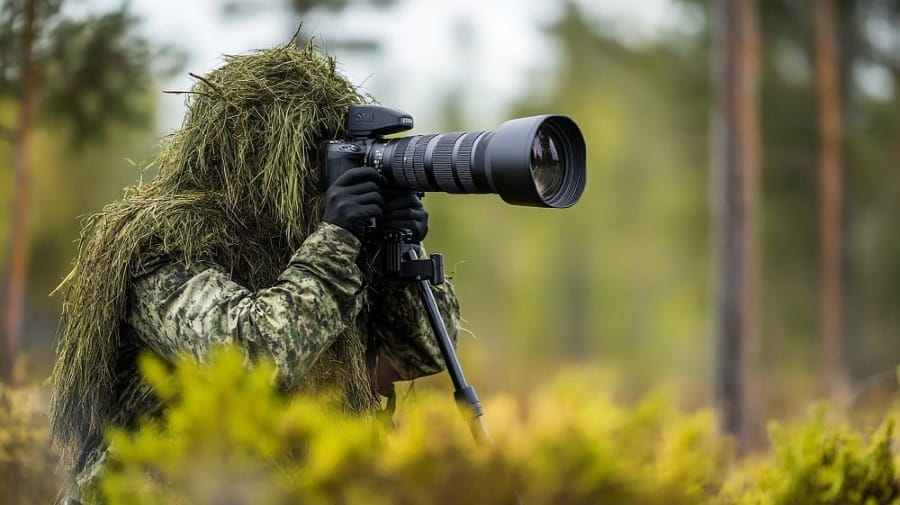
Introduction
Wildlife photography is an exhilarating and challenging genre that requires patience, skill, and the right gear to capture animals in their natural habitats. Unlike other types of photography, where subjects can be controlled or posed, wildlife photography involves unpredictable and often elusive animals. This unpredictability makes it essential for photographers to be prepared with equipment that can handle fast action, low light, and long distances. The goal is to capture not just a clear shot but an image that tells a story, shows behavior, or reveals something unique about the animal.
Having the right gear is crucial to achieving stunning wildlife photography results. From powerful telephoto lenses that bring distant animals closer to camera bodies with fast shutter speeds to freeze movement, each piece of equipment plays a role in capturing high-quality images. Quality gear allows photographers to focus on the creative aspect of capturing a perfect shot rather than struggling with technical limitations. In this guide, we’ll explore the essential camera gear needed for wildlife photography, focusing on features and tools that can elevate the quality of your images. Whether you're an amateur enthusiast or a seasoned professional, the right equipment can make all the difference in bringing wildlife to life through your lens.
Affiliate Disclaimer
Our website may include links to affiliate sites. If you click on an affiliate link and make a purchase, we may earn a small commission or receive other compensation at no extra cost to you. Please note that many of the links on our site are affiliate links. Our use of these links does not impact the products, services, or websites we recommend to you. This disclaimer covers all forms of communication with you, including our website, email, phone, social media, products, and other platforms.
Camera Body: Features to Look For in Wildlife Photography
Selecting the right camera body is foundational to success in wildlife photography. Wildlife photography demands fast reflexes, high durability, and advanced imaging capabilities, making certain features crucial for capturing detailed shots in unpredictable environments. Here’s a breakdown of the top features to consider when choosing a camera body for this genre.
High-Speed Continuous Shooting
Capturing animals in motion is a core aspect of wildlife photography, and a camera body with high-speed continuous shooting capabilities is essential. A fast burst rate—ideally 10 frames per second (fps) or more—allows you to capture multiple frames in quick succession, ensuring you catch fleeting moments such as a bird taking flight or a predator in pursuit. This speed minimizes the risk of missing that perfect split-second pose. Look for cameras with robust buffer capacities as well, allowing for extended bursts without slowing down.
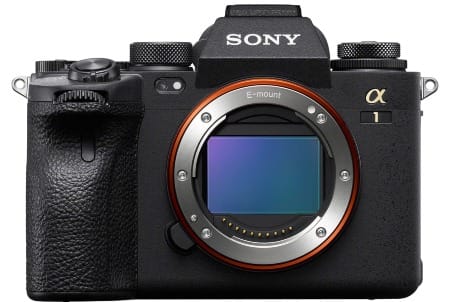
Weather Sealing
Wildlife photography often takes photographers into harsh and variable environments, from rain-soaked forests to dusty savannas. Weather sealing is crucial for protecting the camera body against moisture, dust, and extreme temperatures, prolonging the camera’s lifespan and ensuring reliability. Cameras with robust weather sealing allow photographers to shoot confidently, knowing their equipment can withstand nature’s elements without compromising functionality.
Low-Light Performance
Animals are most active during the early morning and late evening, which means low-light performance is critical. A camera body with excellent high ISO capabilities allows photographers to capture detailed images even in dim conditions without excessive noise. Full-frame sensors typically perform better in low light than crop sensors, as they capture more light, enhancing image quality in challenging lighting. Paired with a fast lens, a camera with strong low-light performance can produce sharp, vibrant wildlife images regardless of the time of day.
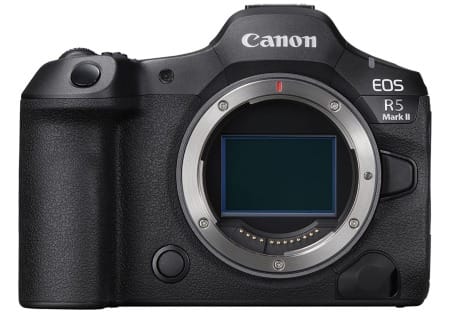
Silent Shooting Mode
A silent or quiet shooting mode is invaluable in wildlife photography. Traditional shutter sounds can easily spook animals, especially those that are skittish or sensitive to noise. Silent shooting mode reduces this risk by minimizing the noise produced by the camera, allowing photographers to get closer to their subjects without disturbing them. Mirrorless cameras are particularly advantageous here, as they often feature electronic shutters that produce little to no noise.
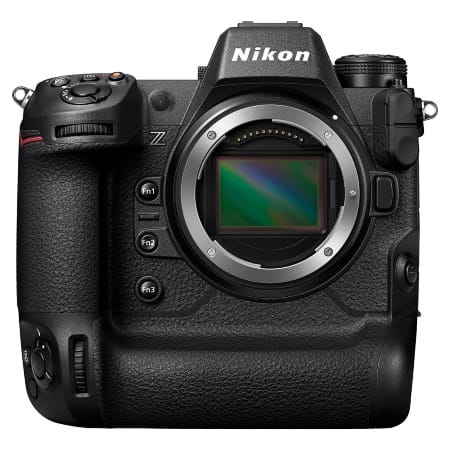
Fast and Accurate Autofocus System
An advanced autofocus system is essential for locking focus on fast-moving subjects. Wildlife photography often involves animals that move unpredictably, and a camera with a sophisticated autofocus system—such as one with multiple cross-type focus points and advanced subject-tracking capabilities—will help ensure that subjects stay sharp, even when they’re in motion. Eye detection for animals, available on some mirrorless models, further enhances the accuracy of focusing, especially in challenging scenarios.
Recommended Camera Models for Wildlife Photography
Several cameras on the market excel in wildlife photography, offering a combination of these critical features. For instance, the Canon EOS R5, Sony A1, and Nikon Z9 are all well-suited for this genre. These models provide high-speed continuous shooting, excellent low-light performance, reliable weather sealing, and advanced autofocus capabilities, making them excellent choices for both amateur and professional wildlife photographers.
A camera body optimized for wildlife photography gives photographers the flexibility and confidence to capture captivating shots of animals in their natural environments, enhancing both the quality and impact of their work.
Telephoto Lenses: Bringing Wildlife Up Close
In wildlife photography, a quality telephoto lens is arguably as essential as the camera itself. These lenses allow photographers to capture detailed images of animals from a safe and non-intrusive distance, preserving natural behaviors and keeping both the subject and photographer out of harm's way. When selecting a telephoto lens for wildlife photography, several critical factors come into play to ensure you achieve sharp, impactful shots.
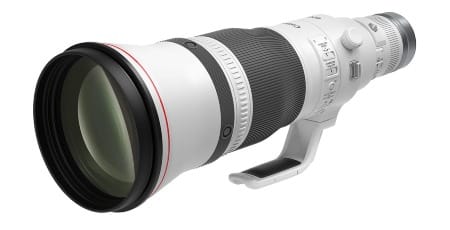
Optimal Focal Lengths
For wildlife photography, focal length is key to bringing distant subjects close and filling the frame with detail. Lenses with focal lengths starting at 300mm and beyond are ideal for photographing wildlife, especially when shooting smaller animals or those that keep their distance. Many wildlife photographers prefer focal lengths between 400mm and 600mm, as these provide a balanced reach while still being manageable to handle. Ultra-telephoto lenses, like an 800mm, offer even more magnification but can be cumbersome and may require additional stabilization.
Prime vs. Zoom Lenses
Choosing between a prime or zoom lens depends largely on the shooting style and the environment. Prime lenses, such as a 400mm f/2.8, generally offer superior sharpness and lower aperture options, which can be beneficial in low-light settings. However, they lack flexibility in framing, which can be challenging when animals are moving unpredictably. Zoom lenses, like 100-400mm or 200-600mm, allow for variable framing and are ideal for photographers needing versatility in dynamic situations. In wildlife photography, where movement is unpredictable, zoom lenses are often preferred for their adaptability.
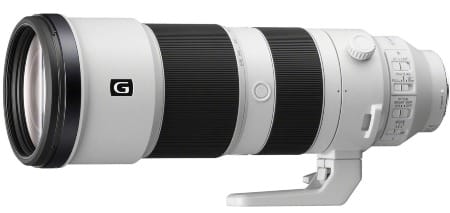
Aperture Considerations
A wide maximum aperture, such as f/2.8 or f/4, allows for better light capture, which is valuable in dawn or dusk lighting conditions when wildlife is often most active. A wider aperture also creates a shallow depth of field, helping to isolate the subject from the background and achieve a pleasing bokeh effect. This effect is especially useful in wildlife photography, drawing the viewer’s eye directly to the animal.
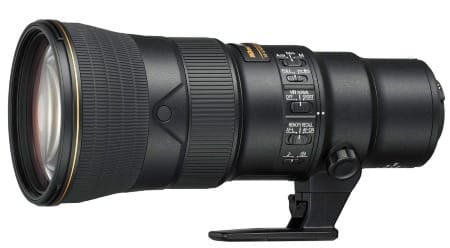
Image Stabilization
At long focal lengths, even the slightest movement can cause blurriness, especially when shooting handheld. Image stabilization (IS) is an essential feature in telephoto lenses for wildlife photography, reducing camera shake and ensuring sharper images. Lenses with advanced IS systems can compensate for several stops, allowing for clear shots even at lower shutter speeds.
Recommended Telephoto Lenses for Wildlife Photography
Popular options for wildlife photography include the Canon RF 600mm f/4, Sony FE 200-600mm f/5.6-6.3, and Nikon 500mm f/5.6 PF. Each offers excellent reach, image stabilization, and sharpness, making them well-suited to capturing stunning wildlife images from a distance.
A well-chosen telephoto lens empowers wildlife photographers to capture images that bring out the majesty and detail of their subjects, achieving the clarity and reach needed for extraordinary wildlife shots.
Tripods and Monopods: Stabilizing Your Shots
Stability is essential in wildlife photography, especially when using heavy telephoto lenses that can be challenging to handhold for extended periods. Tripods and monopods play a critical role in providing support, reducing camera shake, and ensuring sharp images in situations where even the slightest movement can impact image clarity. Choosing the right support system for wildlife photography depends on the environment, subject behavior, and personal preference.
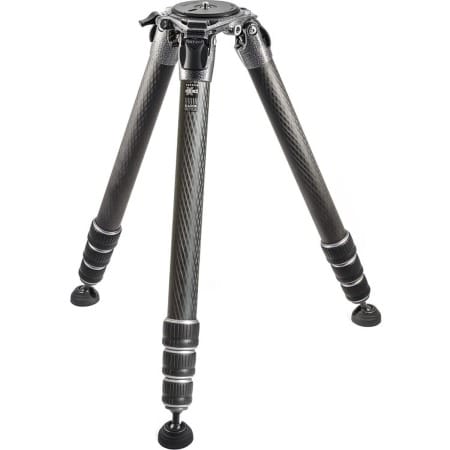
Choosing the Right Support System
The first decision to make is whether a tripod or monopod is more suitable for your wildlife photography needs. Tripods offer maximum stability and are ideal for stationary shooting, such as when photographing animals from a hide or waiting at a watering hole. They allow you to hold a position for extended periods without fatigue, ensuring that your lens remains steady. However, tripods are generally bulkier and less mobile, which can be a limitation in dynamic situations.
Monopods, on the other hand, offer a compromise between stability and mobility. They are lighter and easier to maneuver, making them ideal for photographers who need to move quickly or change positions frequently. While monopods don’t provide the same level of stability as tripods, they are often sufficient for wildlife photography and allow for more freedom when following fast-moving subjects.
Tripod Heads
When using a tripod, the choice of tripod head significantly impacts ease of movement and framing. For wildlife photography, gimbal heads are a popular choice as they support heavy lenses and allow smooth, balanced panning movements. Gimbal heads make it easy to track animals in motion, providing freedom to pivot without sacrificing stability. Ball heads, while compact, may not provide the same level of fluid movement, but they can still work well with lighter setups.
Lightweight but Durable Materials
Wildlife photographers often traverse rugged terrains, making lightweight, durable materials like carbon fiber essential for support gear. Carbon fiber tripods and monopods are not only lightweight but also strong and resistant to environmental factors, such as corrosion from water or dust. The portability of carbon fiber is especially advantageous during long hikes or when traveling to remote locations, ensuring that photographers can carry their gear comfortably without compromising on strength.
Recommended Tripods and Monopods for Wildlife Photography
Some popular options for wildlife photography include the Gitzo Series 5 Systematic Carbon Fiber Tripod and the Manfrotto XPRO Monopod+. Paired with a quality gimbal head, these supports offer the stability and flexibility needed in wildlife photography settings.
In wildlife photography, a reliable tripod or monopod enables photographers to achieve sharp, well-composed shots without the strain of handholding heavy equipment. This stability is vital for capturing the intricate details of wildlife subjects, allowing photographers to focus on framing and timing rather than equipment fatigue.
Teleconverters: Extending Your Reach Without Compromising Quality
Teleconverters are valuable accessories in wildlife photography, offering photographers the ability to extend the reach of their lenses without the cost or weight of a longer prime lens. By attaching a teleconverter between the camera body and the lens, you can effectively increase focal length, which is particularly useful when photographing distant animals. However, using teleconverters also introduces specific considerations that wildlife photographers should be aware of to get the best results.
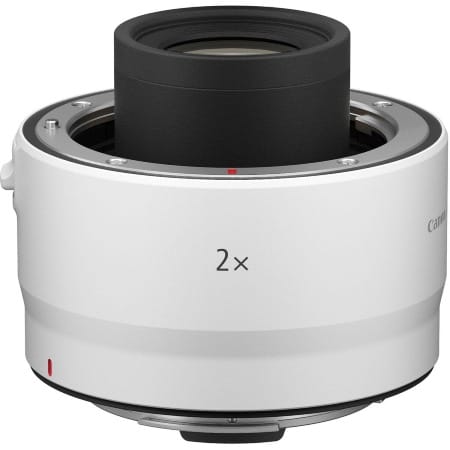
When to Use a Teleconverter
In wildlife photography, teleconverters can be indispensable for photographing elusive or skittish animals from a distance. They are especially useful in situations where getting physically closer is impossible or might disturb the subject. For instance, photographing birds in the wild often requires significant reach, and a teleconverter can turn a 300mm lens into a 420mm (with a 1.4x teleconverter) or even a 600mm (with a 2x teleconverter), providing the magnification needed to fill the frame. This added reach can make a notable difference in achieving close-up shots without sacrificing the subject's natural behavior.
Compatibility and Trade-offs
While teleconverters are convenient, they do come with certain trade-offs, particularly in image quality and aperture. When attaching a 1.4x teleconverter, the lens’s effective aperture is reduced by one stop; a 2x teleconverter reduces it by two stops. This means that an f/4 lens becomes an f/5.6 with a 1.4x and an f/8 with a 2x, which can impact low-light performance and depth of field. Additionally, some teleconverters may reduce sharpness slightly and can sometimes affect autofocus speed and accuracy, especially with older camera models. It’s essential to check compatibility with both your camera and lens, as some combinations are better suited to maintaining sharpness and reliable autofocus.
Common Teleconverter Choices
Teleconverters generally come in two popular magnification levels: 1.4x and 2x. The 1.4x teleconverter provides a moderate boost in focal length with minimal impact on image quality and aperture, making it ideal for most wildlife photography situations. The 2x teleconverter doubles the focal length but also has a greater effect on the aperture and may slightly reduce sharpness. For photographers who often shoot in good lighting conditions or need extreme reach, the 2x teleconverter can be an excellent choice.
Recommended Teleconverters for Wildlife Photography
For wildlife photographers, teleconverters from major brands like Canon, Nikon, and Sony are highly recommended due to their optimized compatibility and performance with their respective lenses. Options like the Canon Extender RF 1.4x and 2x, Nikon TC-14E III and TC-20E III, and Sony 1.4x and 2x Teleconverters are excellent choices that pair seamlessly with compatible telephoto lenses, ensuring quality and ease of use.
Teleconverters allow wildlife photographers to extend their reach without carrying extra heavy gear, making them a practical and versatile tool for capturing far-off subjects. Understanding how to balance their benefits and limitations ensures that photographers can get the best possible images in challenging wildlife photography environments.
Camera Bags: Protecting Your Gear in the Field
A reliable camera bag is essential for wildlife photography, offering a way to safely transport and organize equipment while navigating the unpredictable outdoors. In wildlife photography, where photographers often trek through rugged terrain or harsh weather conditions, the right bag can make a significant difference in terms of convenience, accessibility, and protection. Here’s what to consider when selecting a camera bag suited for wildlife adventures.
Weatherproof and Durable Options
Wildlife photography often takes place in remote and challenging environments, so a camera bag must be weatherproof and durable enough to handle rain, dust, mud, and even snow. Look for bags made from high-quality, water-resistant materials such as ballistic nylon or polyester, which can provide robust protection against the elements. Many wildlife photographers prefer bags with additional rain covers for extra security. Some bags even have sealed zippers and reinforced seams, further enhancing their resilience in wet or humid conditions. A durable, weatherproof bag allows you to focus on your photography rather than worrying about your gear's safety.
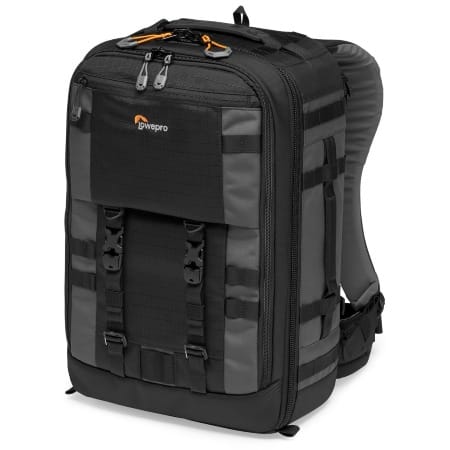
Comfort and Accessibility
Since wildlife photographers typically spend hours in the field, comfort and accessibility are crucial factors. A good wildlife photography bag should feature adjustable, padded shoulder straps and a waist belt to help distribute weight evenly, reducing strain on the shoulders and back. Many backpacks are ergonomically designed with ventilation to keep you comfortable on long hikes. Accessibility is equally important; a bag with side or back panel access makes it easier to reach your gear quickly without having to unpack the entire bag. Some bags also feature multiple compartments, allowing for organized storage of lenses, batteries, memory cards, and other essentials so you can quickly locate what you need when photographing on the go.
Size Considerations
In wildlife photography, photographers often carry bulky telephoto lenses, tripods, and other equipment. It’s essential to choose a camera bag that can comfortably accommodate these items without compromising on space or organization. Many wildlife photography bags offer customizable compartments and padded dividers that can be adjusted to fit larger lenses or specialized accessories. Some bags even feature external straps or dedicated tripod holders, ensuring that you can bring your support gear along without taking up valuable interior space.
Recommended Camera Bags for Wildlife Photography
There are several bags well-suited for wildlife photography, including the Lowepro Pro Trekker series, known for its durability and comfort on long treks, and the Shimoda Explore series, which offers customizable storage options and weather-resistant materials. Bags like these prioritize both protection and comfort, making them ideal for wildlife photographers who venture into challenging locations.
A well-designed camera bag not only protects expensive equipment but also improves efficiency in the field. Wildlife photographers benefit from choosing bags that balance rugged durability with thoughtful organization, ensuring that all necessary gear is easily accessible when it’s time to capture elusive subjects in the wild.
Additional Accessories for Wildlife Photography
In wildlife photography, having the right accessories can make a significant difference in capturing high-quality images efficiently and safely. These accessories serve various purposes, from extending shoot time to protecting gear, allowing photographers to focus on their craft without unnecessary interruptions. Here’s a closer look at essential accessories for wildlife photographers.
Spare Batteries and Memory Cards
Wildlife photography often involves spending long hours in remote locations, so running out of power or memory can mean missing critical shots. Spare batteries are a must-have, especially if your camera has high power consumption due to features like continuous shooting or video capabilities. It’s a good idea to carry multiple fully charged batteries and to invest in a portable charger for multi-day trips. Likewise, extra memory cards with high read and write speeds help handle large RAW files quickly, ensuring you don’t run out of storage during a busy shoot. Choose high-capacity cards from reliable brands, as memory cards are crucial for uninterrupted wildlife photography.

Lens Hoods and Rain Covers
Wildlife photography often takes place in varying weather conditions, from glaring sunlight to unexpected rain. Lens hoods help reduce glare and lens flare, ensuring sharper and more contrast-rich images, especially in direct sunlight. They also provide a level of physical protection, helping to shield the lens from accidental bumps or debris. Rain covers, on the other hand, are essential for keeping your camera and lens dry during wet conditions, preventing potential damage from water exposure. A well-fitted rain cover allows you to keep shooting even in inclement weather, extending your time in the field.
Bean Bags
For wildlife photographers who frequently shoot from ground level or vehicle windows, a bean bag is an invaluable accessory. Unlike a tripod, a bean bag is lightweight and adaptable, providing stability on uneven surfaces like rocks, tree branches, or car doors. This stability is particularly useful when photographing wildlife from a low angle, as it helps keep the camera steady without the bulk of a tripod. Bean bags can also be used to stabilize lenses in tight spaces where tripods are impractical, making them versatile for various wildlife photography scenarios.
Remote Shutter Releases
In wildlife photography, capturing sharp images without disturbing your subject is essential. Remote shutter releases allow photographers to trigger the shutter without touching the camera, which reduces vibrations and ensures sharper images. This is particularly useful for close-up shots of skittish animals or for long exposures in low light. Wireless remote releases offer even more flexibility, enabling photographers to operate the camera from a distance, especially helpful when using a hide to photograph animals in a natural setting.
Other Useful Accessories
In addition to these essentials, other accessories like cleaning kits for lenses and sensors, GPS devices for location tracking, and field guides for wildlife identification can enhance the wildlife photography experience. A well-rounded set of accessories ensures that photographers are prepared for various challenges, from unexpected weather changes to identifying rare species in the wild.
Equipping yourself with these accessories allows for a more efficient and enjoyable wildlife photography experience. With reliable support from these tools, photographers can focus on capturing the unique and fleeting moments that make wildlife photography so rewarding.
Essential Clothing and Field Gear
In wildlife photography, the right clothing and field gear can make the difference between a successful day in the field and a missed opportunity. Wildlife photographers often spend long hours outdoors, navigating different terrains and facing varied weather conditions, so practical clothing and gear are essential for comfort, safety, and effectiveness.
Camouflage and Neutral Clothing
To avoid startling animals, wearing camouflage or neutral-colored clothing helps wildlife photographers blend into the environment. Bright or reflective clothing can easily alert wildlife to human presence, so earth tones and greens are ideal. This is especially important when getting close to sensitive or easily frightened animals.
Binoculars
For wildlife photography, binoculars are invaluable for scouting animals before moving in for a shot. They help photographers locate subjects from a distance without disturbing the environment or risking noise from camera setups. High-quality binoculars provide clear, close views, allowing photographers to plan their shots effectively.
With the right clothing and field gear, wildlife photographers can focus fully on capturing captivating, undisturbed images of animals in their natural habitats.
Conclusion
Equipping yourself with the right gear is fundamental to success in wildlife photography, enhancing both the quality of your images and the experience of working in natural environments. From camera bodies with fast autofocus and high-speed continuous shooting to telephoto lenses and stabilizing tripods, each piece of equipment plays a specific role in capturing clear, detailed images of animals in motion. Thoughtfully chosen accessories, such as teleconverters, bean bags, and durable camera bags, allow photographers to work effectively in the field, ready for various challenges and unexpected moments.
Beyond technical gear, practical clothing, and field essentials, like camouflage clothing and binoculars, complete the toolkit, ensuring photographers can stay comfortable, safe, and discreet while photographing wildlife. Combining patience, respect for nature, and well-suited gear, wildlife photographers are empowered to capture authentic and stunning images of animals in their natural habitats, bringing viewers closer to the beauty and intrigue of the wild.
Thank you for visiting our site and being part of this journey with us! We rely on the generous support of visitors like you to continue providing high-quality. Your donation, no matter the size, helps us maintain the website and create more valuable resources for everyone.

